- Home
- Walter Isaacson
Steve Jobs Page 22
Steve Jobs Read online
Page 22
As he often did when he wanted to have a serious conversation, Jobs suggested they go on a long walk. They trekked the streets of Cupertino, back and forth to De Anza college, stopping at a diner and then walking some more. “We had to take a walk, which is not one of my management techniques,” Gates said. “That was when he began saying things like, ‘Okay, okay, but don’t make it too much like what we’re doing.’”
As it turned out, Microsoft wasn’t able to get Windows 1.0 ready for shipping until the fall of 1985. Even then, it was a shoddy product. It lacked the elegance of the Macintosh interface, and it had tiled windows rather than the magical clipping of overlapping windows that Bill Atkinson had devised. Reviewers ridiculed it and consumers spurned it. Nevertheless, as is often the case with Microsoft products, persistence eventually made Windows better and then dominant.
Jobs never got over his anger. “They just ripped us off completely, because Gates has no shame,” Jobs told me almost thirty years later. Upon hearing this, Gates responded, “If he believes that, he really has entered into one of his own reality distortion fields.” In a legal sense, Gates was right, as courts over the years have subsequently ruled. And on a practical level, he had a strong case as well. Even though Apple made a deal for the right to use what it saw at Xerox PARC, it was inevitable that other companies would develop similar graphical interfaces. As Apple found out, the “look and feel” of a computer interface design is a hard thing to protect.
And yet Jobs’s dismay was understandable. Apple had been more innovative, imaginative, elegant in execution, and brilliant in design. But even though Microsoft created a crudely copied series of products, it would end up winning the war of operating systems. This exposed an aesthetic flaw in how the universe worked: The best and most innovative products don’t always win. A decade later, this truism caused Jobs to let loose a rant that was somewhat arrogant and over-the-top, but also had a whiff of truth to it. “The only problem with Microsoft is they just have no taste, they have absolutely no taste,” he said. “I don’t mean that in a small way. I mean that in a big way, in the sense that they don’t think of original ideas and they don’t bring much culture into their product.”
CHAPTER SEVENTEEN
ICARUS
What Goes Up . . .
Flying High
The launch of the Macintosh in January 1984 propelled Jobs into an even higher orbit of celebrity, as was evident during a trip to Manhattan he took at the time. He went to a party that Yoko Ono threw for her son, Sean Lennon, and gave the nine-year-old a Macintosh. The boy loved it. The artists Andy Warhol and Keith Haring were there, and they were so enthralled by what they could create with the machine that the contemporary art world almost took an ominous turn. “I drew a circle,” Warhol exclaimed proudly after using QuickDraw. Warhol insisted that Jobs take a computer to Mick Jagger. When Jobs arrived at the rock star’s townhouse, Jagger seemed baffled. He didn’t quite know who Jobs was. Later Jobs told his team, “I think he was on drugs. Either that or he’s brain-damaged.” Jagger’s daughter Jade, however, took to the computer immediately and started drawing with MacPaint, so Jobs gave it to her instead.
He bought the top-floor duplex apartment that he’d shown Sculley in the San Remo on Manhattan’s Central Park West and hired James Freed of I. M. Pei’s firm to renovate it, but he never moved in. (He would later sell it to Bono for $15 million.) He also bought an old Spanish colonial–style fourteen-bedroom mansion in Woodside, in the hills above Palo Alto, that had been built by a copper baron, which he moved into but never got around to furnishing.
At Apple his status revived. Instead of seeking ways to curtail Jobs’s authority, Sculley gave him more: The Lisa and Macintosh divisions were folded together, with Jobs in charge. He was flying high, but this did not serve to make him more mellow. Indeed there was a memorable display of his brutal honesty when he stood in front of the combined Lisa and Macintosh teams to describe how they would be merged. His Macintosh group leaders would get all of the top positions, he said, and a quarter of the Lisa staff would be laid off. “You guys failed,” he said, looking directly at those who had worked on the Lisa. “You’re a B team. B players. Too many people here are B or C players, so today we are releasing some of you to have the opportunity to work at our sister companies here in the valley.”
Bill Atkinson, who had worked on both teams, thought it was not only callous, but unfair. “These people had worked really hard and were brilliant engineers,” he said. But Jobs had latched onto what he believed was a key management lesson from his Macintosh experience: You have to be ruthless if you want to build a team of A players. “It’s too easy, as a team grows, to put up with a few B players, and they then attract a few more B players, and soon you will even have some C players,” he recalled. “The Macintosh experience taught me that A players like to work only with other A players, which means you can’t indulge B players.”
For the time being, Jobs and Sculley were able to convince themselves that their friendship was still strong. They professed their fondness so effusively and often that they sounded like high school sweethearts at a Hallmark card display. The first anniversary of Sculley’s arrival came in May 1984, and to celebrate Jobs lured him to a dinner party at Le Mouton Noir, an elegant restaurant in the hills southwest of Cupertino. To Sculley’s surprise, Jobs had gathered the Apple board, its top managers, and even some East Coast investors. As they all congratulated him during cocktails, Sculley recalled, “a beaming Steve stood in the background, nodding his head up and down and wearing a Cheshire Cat smile on his face.” Jobs began the dinner with a fulsome toast. “The happiest two days for me were when Macintosh shipped and when John Sculley agreed to join Apple,” he said. “This has been the greatest year I’ve ever had in my whole life, because I’ve learned so much from John.” He then presented Sculley with a montage of memorabilia from the year.
In response, Sculley effused about the joys of being Jobs’s partner for the past year, and he concluded with a line that, for different reasons, everyone at the table found memorable. “Apple has one leader,” he said, “Steve and me.” He looked across the room, caught Jobs’s eye, and watched him smile. “It was as if we were communicating with each other,” Sculley recalled. But he also noticed that Arthur Rock and some of the others were looking quizzical, perhaps even skeptical. They were worried that Jobs was completely rolling him. They had hired Sculley to control Jobs, and now it was clear that Jobs was the one in control. “Sculley was so eager for Steve’s approval that he was unable to stand up to him,” Rock recalled.
Keeping Jobs happy and deferring to his expertise may have seemed like a smart strategy to Sculley. But he failed to realize that it was not in Jobs’s nature to share control. Deference did not come naturally to him. He began to become more vocal about how he thought the company should be run. At the 1984 business strategy meeting, for example, he pushed to make the company’s centralized sales and marketing staffs bid on the right to provide their services to the various product divisions. (This would have meant, for example, that the Macintosh group could decide not to use Apple’s marketing team and instead create one of its own.) No one else was in favor, but Jobs kept trying to ram it through. “People were looking to me to take control, to get him to sit down and shut up, but I didn’t,” Sculley recalled. As the meeting broke up, he heard someone whisper, “Why doesn’t Sculley shut him up?”
When Jobs decided to build a state-of-the-art factory in Fremont to manufacture the Macintosh, his aesthetic passions and controlling nature kicked into high gear. He wanted the machinery to be painted in bright hues, like the Apple logo, but he spent so much time going over paint chips that Apple’s manufacturing director, Matt Carter, finally just installed them in their usual beige and gray. When Jobs took a tour, he ordered that the machines be repainted in the bright colors he wanted. Carter objected; this was precision equipment, and repainting the machines could cause problems. He turned out to be right. One of the mo
st expensive machines, which got painted bright blue, ended up not working properly and was dubbed “Steve’s folly.” Finally Carter quit. “It took so much energy to fight him, and it was usually over something so pointless that finally I had enough,” he recalled.
Jobs tapped as a replacement Debi Coleman, the spunky but good-natured Macintosh financial officer who had once won the team’s annual award for the person who best stood up to Jobs. But she knew how to cater to his whims when necessary. When Apple’s art director, Clement Mok, informed her that Jobs wanted the walls to be pure white, she protested, “You can’t paint a factory pure white. There’s going to be dust and stuff all over.” Mok replied, “There’s no white that’s too white for Steve.” She ended up going along. With its pure white walls and its bright blue, yellow, and red machines, the factory floor “looked like an Alexander Calder showcase,” said Coleman.
When asked about his obsessive concern over the look of the factory, Jobs said it was a way to ensure a passion for perfection:
I’d go out to the factory, and I’d put on a white glove to check for dust. I’d find it everywhere—on machines, on the tops of the racks, on the floor. And I’d ask Debi to get it cleaned. I told her I thought we should be able to eat off the floor of the factory. Well, this drove Debi up the wall. She didn’t understand why. And I couldn’t articulate it back then. See, I’d been very influenced by what I’d seen in Japan. Part of what I greatly admired there—and part of what we were lacking in our factory—was a sense of teamwork and discipline. If we didn’t have the discipline to keep that place spotless, then we weren’t going to have the discipline to keep all these machines running.
One Sunday morning Jobs brought his father to see the factory. Paul Jobs had always been fastidious about making sure that his craftsmanship was exacting and his tools in order, and his son was proud to show that he could do the same. Coleman came along to give the tour. “Steve was, like, beaming,” she recalled. “He was so proud to show his father this creation.” Jobs explained how everything worked, and his father seemed truly admiring. “He kept looking at his father, who touched everything and loved how clean and perfect everything looked.”
Things were not quite as sweet when Danielle Mitterrand toured the factory. The Cuba-admiring wife of France’s socialist president François Mitterrand asked a lot of questions, through her translator, about the working conditions, while Jobs, who had grabbed Alain Rossmann to serve as his translator, kept trying to explain the advanced robotics and technology. After Jobs talked about the just-in-time production schedules, she asked about overtime pay. He was annoyed, so he described how automation helped him keep down labor costs, a subject he knew would not delight her. “Is it hard work?” she asked. “How much vacation time do they get?” Jobs couldn’t contain himself. “If she’s so interested in their welfare,” he said to her translator, “tell her she can come work here any time.” The translator turned pale and said nothing. After a moment Rossmann stepped in to say, in French, “M. Jobs says he thanks you for your visit and your interest in the factory.” Neither Jobs nor Madame Mitterrand knew what happened, Rossmann recalled, but her translator looked very relieved.
Afterward, as he sped his Mercedes down the freeway toward Cupertino, Jobs fumed to Rossmann about Madame Mitterrand’s attitude. At one point he was going just over 100 miles per hour when a policeman stopped him and began writing a ticket. After a few minutes, as the officer scribbled away, Jobs honked. “Excuse me?” the policeman said. Jobs replied, “I’m in a hurry.” Amazingly, the officer didn’t get mad. He simply finished writing the ticket and warned that if Jobs was caught going over 55 again he would be sent to jail. As soon as the policeman left, Jobs got back on the road and accelerated to 100. “He absolutely believed that the normal rules didn’t apply to him,” Rossmann marveled.
His wife, Joanna Hoffman, saw the same thing when she accompanied Jobs to Europe a few months after the Macintosh was launched. “He was just completely obnoxious and thinking he could get away with anything,” she recalled. In Paris she had arranged a formal dinner with French software developers, but Jobs suddenly decided he didn’t want to go. Instead he shut the car door on Hoffman and told her he was going to see the poster artist Folon instead. “The developers were so pissed off they wouldn’t shake our hands,” she said.
In Italy, he took an instant dislike to Apple’s general manager, a soft rotund guy who had come from a conventional business. Jobs told him bluntly that he was not impressed with his team or his sales strategy. “You don’t deserve to be able to sell the Mac,” Jobs said coldly. But that was mild compared to his reaction to the restaurant the hapless manager had chosen. Jobs demanded a vegan meal, but the waiter very elaborately proceeded to dish out a sauce filled with sour cream. Jobs got so nasty that Hoffman had to threaten him. She whispered that if he didn’t calm down, she was going to pour her hot coffee on his lap.
The most substantive disagreements Jobs had on the European trip concerned sales forecasts. Using his reality distortion field, Jobs was always pushing his team to come up with higher projections. He kept threatening the European managers that he wouldn’t give them any allocations unless they projected bigger forecasts. They insisted on being realistic, and Hoffmann had to referee. “By the end of the trip, my whole body was shaking uncontrollably,” Hoffman recalled.
It was on this trip that Jobs first got to know Jean-Louis Gassée, Apple’s manager in France. Gassée was among the few to stand up successfully to Jobs on the trip. “He has his own way with the truth,” Gassée later remarked. “The only way to deal with him was to out-bully him.” When Jobs made his usual threat about cutting down on France’s allocations if Gassée didn’t jack up sales projections, Gassée got angry. “I remember grabbing his lapel and telling him to stop, and then he backed down. I used to be an angry man myself. I am a recovering assaholic. So I could recognize that in Steve.”
Gassée was impressed, however, at how Jobs could turn on the charm when he wanted to. François Mitterrand had been preaching the gospel of informatique pour tous—computing for all—and various academic experts in technology, such as Marvin Minsky and Nicholas Negroponte, came over to sing in the choir. Jobs gave a talk to the group at the Hotel Bristol and painted a picture of how France could move ahead if it put computers in all of its schools. Paris also brought out the romantic in him. Both Gassée and Negroponte tell tales of him pining over women while there.
Falling
After the burst of excitement that accompanied the release of Macintosh, its sales began to taper off in the second half of 1984. The problem was a fundamental one: It was a dazzling but woefully slow and underpowered computer, and no amount of hoopla could mask that. Its beauty was that its user interface looked like a sunny playroom rather than a somber dark screen with sickly green pulsating letters and surly command lines. But that led to its greatest weakness: A character on a text-based display took less than a byte of code, whereas when the Mac drew a letter, pixel by pixel in any elegant font you wanted, it required twenty or thirty times more memory. The Lisa handled this by shipping with more than 1,000K RAM, whereas the Macintosh made do with 128K.
Another problem was the lack of an internal hard disk drive. Jobs had called Joanna Hoffman a “Xerox bigot” when she fought for such a storage device. He insisted that the Macintosh have just one floppy disk drive. If you wanted to copy data, you could end up with a new form of tennis elbow from having to swap floppy disks in and out of the single drive. In addition, the Macintosh lacked a fan, another example of Jobs’s dogmatic stubbornness. Fans, he felt, detracted from the calm of a computer. This caused many component failures and earned the Macintosh the nickname “the beige toaster,” which did not enhance its popularity. It was so seductive that it had sold well enough for the first few months, but when people became more aware of its limitations, sales fell. As Hoffman later lamented, “The reality distortion field can serve as a spur, but then reality itself hits.”
<
br /> At the end of 1984, with Lisa sales virtually nonexistent and Macintosh sales falling below ten thousand a month, Jobs made a shoddy, and atypical, decision out of desperation. He decided to take the inventory of unsold Lisas, graft on a Macintosh-emulation program, and sell them as a new product, the “Macintosh XL.” Since the Lisa had been discontinued and would not be restarted, it was an unusual instance of Jobs producing something that he did not believe in. “I was furious because the Mac XL wasn’t real,” said Hoffman. “It was just to blow the excess Lisas out the door. It sold well, and then we had to discontinue the horrible hoax, so I resigned.”
The dark mood was evident in the ad that was developed in January 1985, which was supposed to reprise the anti-IBM sentiment of the resonant “1984” ad. Unfortunately there was a fundamental difference: The first ad had ended on a heroic, optimistic note, but the storyboards presented by Lee Clow and Jay Chiat for the new ad, titled “Lemmings,” showed dark-suited, blindfolded corporate managers marching off a cliff to their death. From the beginning both Jobs and Sculley were uneasy. It didn’t seem as if it would convey a positive or glorious image of Apple, but instead would merely insult every manager who had bought an IBM.

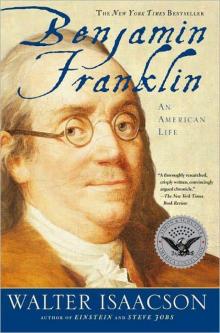 Benjamin Franklin: An American Life
Benjamin Franklin: An American Life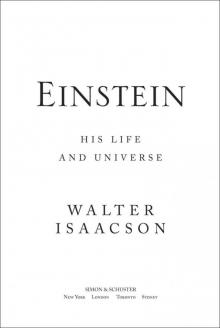 Einstein: His Life and Universe
Einstein: His Life and Universe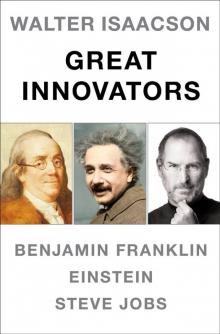 Walter Isaacson Great Innovators e-book boxed set
Walter Isaacson Great Innovators e-book boxed set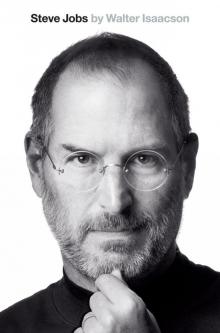 Steve Jobs
Steve Jobs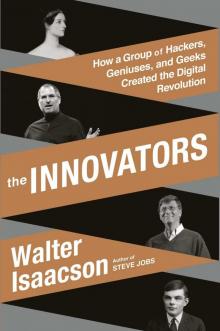 The Innovators
The Innovators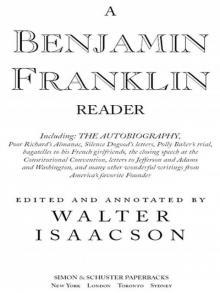 A Benjamin Franklin Reader
A Benjamin Franklin Reader